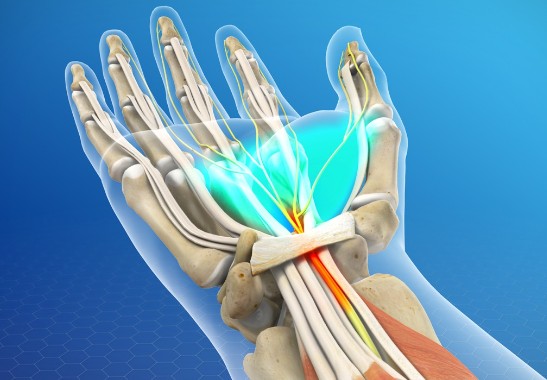Carpal tunnel syndrome (CTS) is a common condition that affects the wrist and hand, often causing pain, tingling, and numbness. These symptoms occur when the median nerve becomes compressed as it passes through the carpal tunnel in the wrist. Dr. Jason Pirozzolo, an expert in musculoskeletal health, emphasizes that wrist braces, ergonomic adjustments, and stretching techniques are essential strategies for managing and alleviating carpal tunnel syndrome. “Taking early steps to address CTS can prevent it from progressing to a more severe state,” explains Dr. Jason Pirozzolo.
Most importantly, wrist braces provide much-needed support and relief for individuals with CTS. Wearing a brace keeps the wrist in a neutral position, reducing pressure on the median nerve. Dr. Pirozzolo advises wearing braces at night, when people are prone to bending their wrists during sleep. “Night braces are a simple, effective solution to minimize symptoms and promote healing,” he says. For those experiencing symptoms during the day, lightweight braces that allow for movement while maintaining support are also beneficial.
Ergonomic adjustments play a vital role in preventing and managing carpal tunnel syndrome. Poor workstation setups, repetitive motions, and awkward wrist angles can exacerbate the condition. Dr. Jason Pirozzolo recommends adjusting your chair and desk height to ensure your wrists stay straight while typing. Additionally, use a keyboard and mouse designed for ergonomics to reduce strain. “Making small changes to your environment can have a big impact on wrist health,” he notes. Regular breaks to stretch and shake out your hands also help alleviate tension.
Stretching and strengthening exercises are critical components of CTS care. Gentle stretches improve flexibility and reduce tension in the wrist and forearm. Dr. Pirozzolo suggests exercises such as wrist flexor stretches, wrist extensions, and tendon gliding movements. “Incorporating these exercises into your daily routine can prevent stiffness and enhance recovery,” he explains. Strengthening the muscles of the hand and forearm provides additional support, reducing the likelihood of recurring symptoms.
Because inflammation often contributes to CTS, managing it is crucial. Applying ice packs to the wrist for 10-15 minutes can reduce swelling and alleviate discomfort. Dr. Jason Pirozzolo advises, “Alternating between rest and icing is an effective way to calm inflamed tissues.” Over-the-counter anti-inflammatory medications can also provide temporary relief, but they should be used as directed.
For persistent or severe symptoms, advanced treatments may be necessary. Physical therapy, corticosteroid injections, or even surgery are options for individuals who don’t respond to conservative measures. Dr. Pirozzolo emphasizes the importance of seeking professional evaluation to determine the best course of action. “Addressing the root cause early can often prevent the need for more invasive treatments,” he explains.
Maintaining overall health can also benefit those with CTS. Staying active, eating an anti-inflammatory diet, and managing weight reduces strain on the body’s joints and tendons. Foods rich in omega-3 fatty acids, such as salmon and walnuts, can support nerve health. Dr. Pirozzolo states, “A balanced approach to health supports both prevention and recovery.”
Mental health plays a role as well. Chronic pain or discomfort can lead to stress, which may worsen symptoms. Incorporating relaxation techniques like deep breathing or mindfulness can help patients stay positive and engaged in their recovery process. Dr. Pirozzolo reminds us, “A calm and focused mind is just as important as physical care.”
Prevention is key to avoiding the development or recurrence of CTS. Stretching before activities, avoiding repetitive wrist movements, and keeping wrists in a neutral position can all reduce the risk. Using tools with padded grips and minimizing forceful hand motions are also helpful. “Taking proactive steps can save you from discomfort later on,” Dr. Jason Pirozzolo advises.
By implementing these strategies, individuals with carpal tunnel syndrome can regain function and reduce pain. As Dr. Pirozzolo explains, “Managing CTS is about consistency and care. With the right approach, relief is within reach.”
For expert advice on sports and orthopedic injuries, recovery strategies, and cutting-edge treatments, follow Dr. Jason Pirozzolo for insights into the latest developments in sports medicine and orthopedic medicine. You may also visit a Key West orthopedic clinic for more information.

